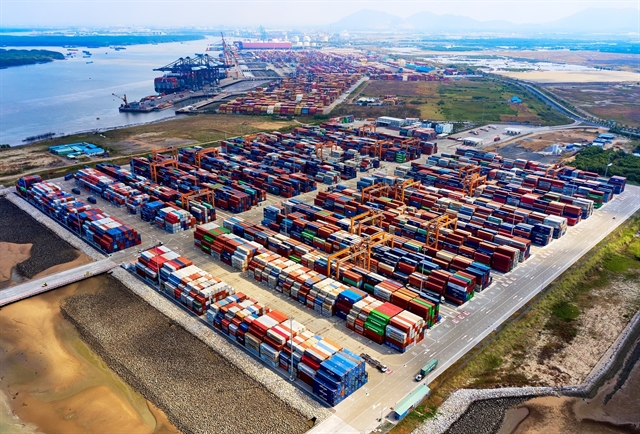(PLVN) – Vietnam has set its sights on building leading enterprises with international competitiveness, which will serve as key drivers in the nation’s industrialization and modernization process. How should policies be developed to create these leading enterprises?
Creating Space for Business Development
Many economic experts agree that while Vietnam currently has a few large enterprises that have made it to global rankings, their number is still limited and does not fully meet the demands of economic development. Therefore, policies are needed to support these “leading cranes” to drive growth, create ecosystems for small and medium-sized enterprises (SMEs) to grow, and help them gradually reach the global stage.
Economic expert Dr. Tran Dinh Thien emphasized that for the economic structure to develop, the country needs key pillars to lead. The first pillar is to prioritize the development of private corporations and enterprises that serve as the main driving force for the economy, such as Hoa Phat, Thaco, and Vinfast.
“The issue at hand is to build corporations that are strong enough to serve as pillars and have the capacity to compete internationally. However, to build these pillars, a solid foundation for businesses is essential. To create a strong foundation, we need to provide businesses with the space to grow. This is a critical requirement for businesses, allowing these pillars to become stronger,” said Dr. Thien.
Furthermore, Dr. Thien suggested that national resources should be concentrated on a few large corporations to lead Vietnam’s economy. To achieve this, comprehensive strategies are needed, including targeted strategies for each industry, enterprise, and sector.
Dr. Thien stressed that although Vietnam’s economy is growing well, the industrial sector is still led by foreign direct investment (FDI) enterprises. Therefore, more industrial policies are needed to establish Vietnamese industrial value chains led by Vietnamese enterprises. At the same time, opportunities and policies should be created to enable Vietnamese SMEs to participate in the value chains of FDI enterprises.
“We should learn from Japan and build a multi-layered enterprise model, with extremely large enterprises, large enterprises, medium enterprises, small enterprises, and micro-enterprises… From this strategy, it will be easier to divide and shape the development strategy to suit each enterprise level,” Dr. Thien suggested. He also emphasized the need to encourage innovative startups, which would “inject new blood” into the business community and the economy, leading to the emergence of new billionaires who can drive economic growth.

Long-Term Policies Needed for Development
Mr. Vu Van Khoa, Deputy Director of the Institute of Mechanical Research (Ministry of Industry and Trade), noted that in the fields of automobile manufacturing, motorcycles, and hydropower, there are several strong corporations such as Vinfast, Truong Hai, Thaco, Hyundai, as well as the Institute of Mechanical Research, Vietnam Engine and Agricultural Machinery Corporation, and Song Da Corporation. These companies and groups have created jobs for many satellite enterprises and workers.
“However, in many other fields, we do not have enterprises strong enough to lead the manufacturing industry. Currently, most enterprises are only handling basic technology and do not have the ability to independently manage technology and industry, making them heavily dependent on foreign enterprises,” said Mr. Khoa.
He cited examples of energy projects and infrastructure development in railway and highway construction, where Vietnam remains largely dependent on FDI enterprises. As a result, the added value is minimal, and the technological content gained is not high. Thus, to create momentum for the growth of large enterprises and establish businesses that can drive the economy as “leading cranes,” it is necessary to develop mechanisms and complete policies.
Mr. Hoang Manh Tan, Deputy General Director of Son Ha International Corporation, emphasized that developing a strong Vietnamese industrial sector and creating core pillars require multiple factors. The government should enhance trust in Vietnamese enterprises, assign large projects that businesses have the capacity to implement, and avoid over-reliance on foreign enterprises. To build a team of leading businesses, long-term policies are needed, and the regulatory framework must be gradually improved to allow companies to develop robustly.
From a business perspective, Mr. Tan stressed the importance of human resources, which are crucial for business development. While companies are actively training and producing many engineers, the application of these skills in practice is sometimes lacking, and there is still a shortage of high-quality human resources.
“We need to learn from larger markets such as China and South Korea. Currently, Vietnam is becoming an attractive investment destination in the region and the world, emerging as a leading production hub. Therefore, besides policies and mechanisms from the authorities, businesses themselves need to proactively develop plans to seize opportunities and become core pillars of the country’s development, reaching the global stage,” Mr. Tan concluded.
















